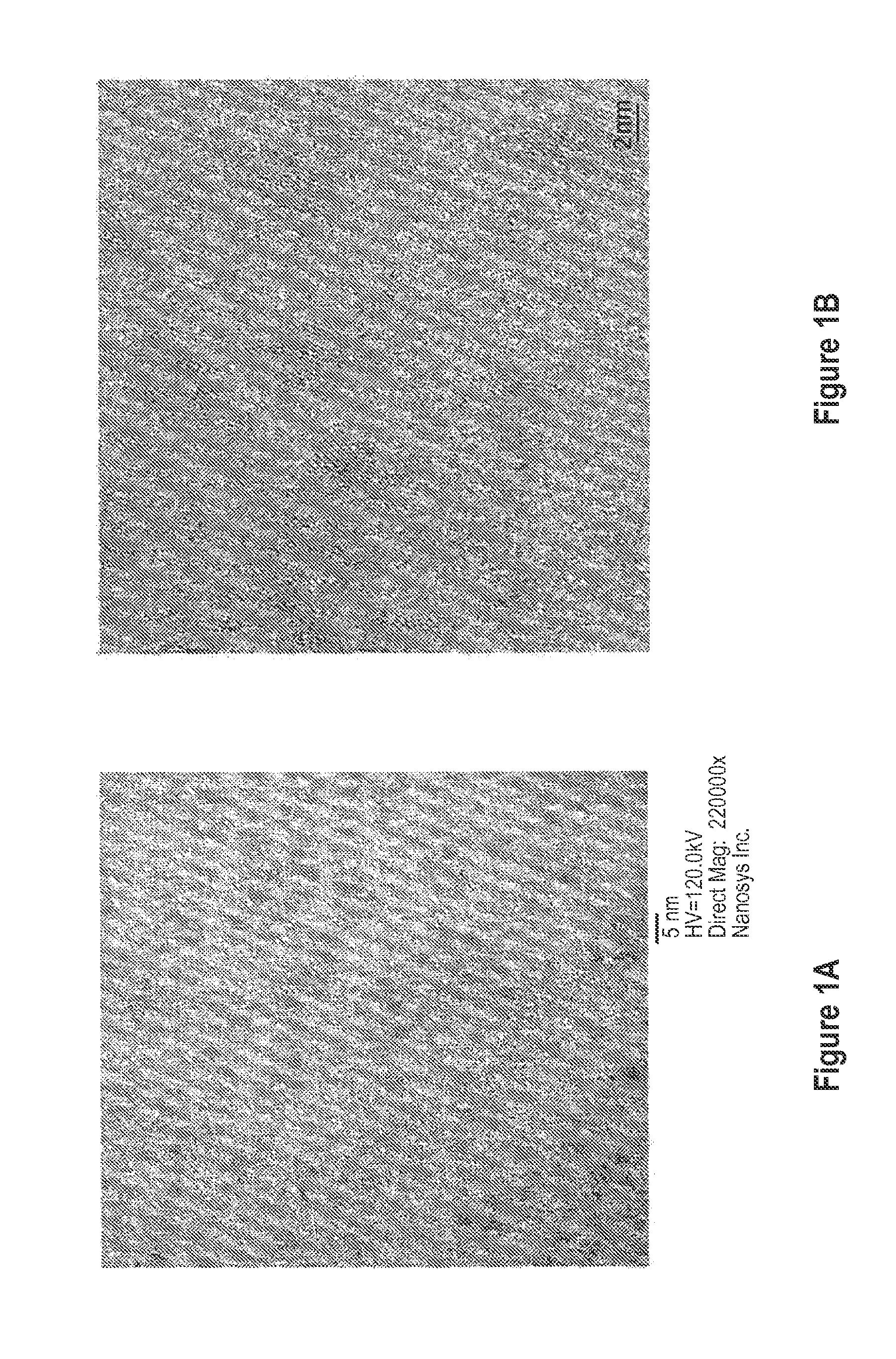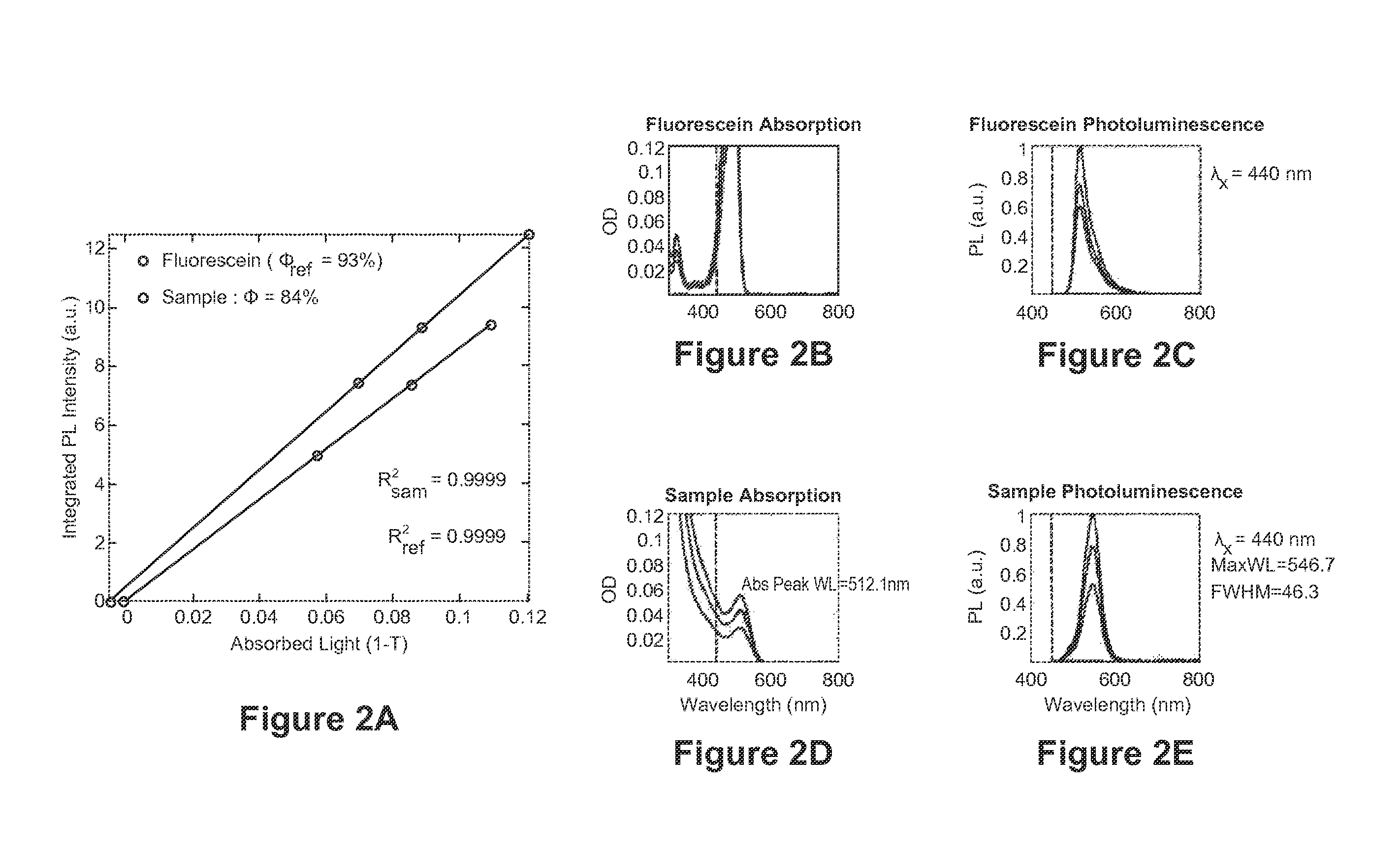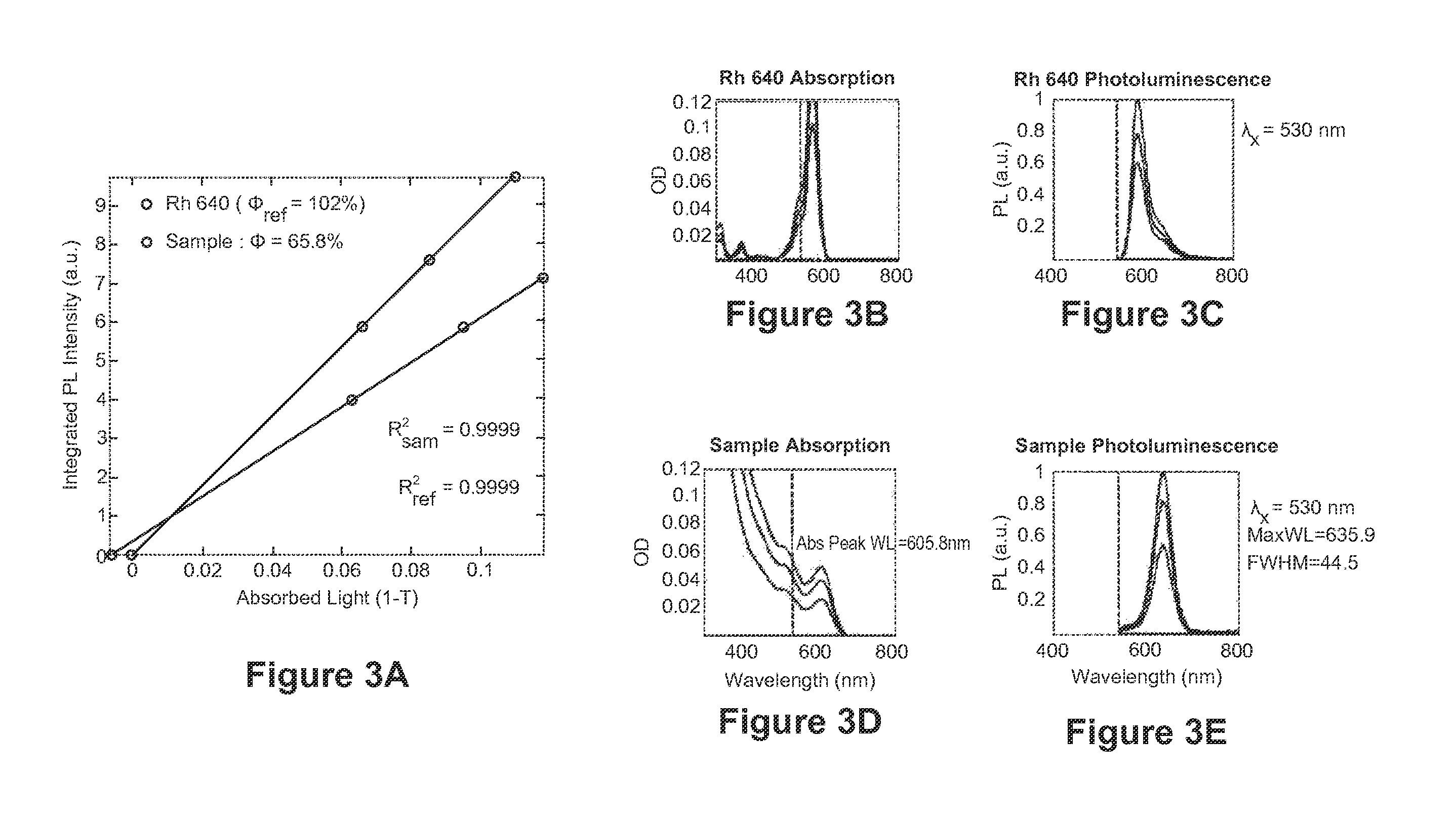Highly luminescent nanostructures and methods of producing same
a high-luminescent nanoparticle technology, applied in the field of nanotechnology, can solve the problems of limiting the future application of such cadmium-based nanoparticles, high quantum yield inp nanostructures are difficult to obtain, and achieve the effect of high quantum yield
- Summary
- Abstract
- Description
- Claims
- Application Information
AI Technical Summary
Benefits of technology
Problems solved by technology
Method used
Image
Examples
example 1
Synthesis of Highly Luminescent Quantum Dots
Synthesis of InP Core for Green-Emitting Core / Shell Dots
[0146]To produce the InP cores, 5 g of trioctylphosphine oxide (TOPO), 2.33 g of indium acetate (8 mmol), and 4.797 g of lauric acid (24 mmol) are added to a reaction flask. The mixture is heated to 160° C. for 40 minutes and then 250° C. for 20 minutes under vacuum. The reaction temperature is then increased to 300° C. under N2 flow. At this temperature, 1 g tris(trimethylsilyl)phosphine (4 mmol) in 3 g trioctylphosphine (TOP) is quickly injected into the reaction flask, and reaction temperature is kept at 260° C. After one minute, the reaction is stopped by removing the heating element, and the reaction solution is allowed to cool to room temperature. 8 ml toluene is added to the reaction mixture in the glove box, and the InP dots are precipitated out by addition of 25 ml ethanol to the mixture followed by centrifugation and decantation of the supernatant. The InP dots obtained are ...
example 2
Zinc Sulfide Shell Formation Using an Organic Thiol Sulfur Precursor
[0164]Green-emitting InP cores are synthesized as described above. To achieve indium core enrichment, 25 mg InP cores in solution in hexane, 6 ml ODE, and 0.5 g of indium laurate in ODE (prepared as detailed above) are added to a reaction flask. The mixture is put under vacuum for 10 minutes at room temperature. The temperature is then increased to 230° C. and held at that temperature for 2 hours.
[0165]The reaction temperature is then lowered to 140° C., and 0.7 g hexanoic acid is added to the reaction flask, which is held at 140° C. for 10 minutes. A 0.5 monolayer thick ZnSSe shell is formed by drop-wise addition of 21 mg diethyl zinc, 13 mg bis(trimethylsilyl)selenide, and 10 mg hexamethyldisilthiane in 1 ml ODE to the reaction mixture over 2 min. After ZnSSe precursor addition, the reaction temperature is held at 140° C. for 30 minutes. The temperature is then increased to 200° C. A two monolayer thick ZnS shell ...
PUM
| Property | Measurement | Unit |
|---|---|---|
| average diameter | aaaaa | aaaaa |
| average diameter | aaaaa | aaaaa |
| diameter | aaaaa | aaaaa |
Abstract
Description
Claims
Application Information
 Login to View More
Login to View More - R&D
- Intellectual Property
- Life Sciences
- Materials
- Tech Scout
- Unparalleled Data Quality
- Higher Quality Content
- 60% Fewer Hallucinations
Browse by: Latest US Patents, China's latest patents, Technical Efficacy Thesaurus, Application Domain, Technology Topic, Popular Technical Reports.
© 2025 PatSnap. All rights reserved.Legal|Privacy policy|Modern Slavery Act Transparency Statement|Sitemap|About US| Contact US: help@patsnap.com



